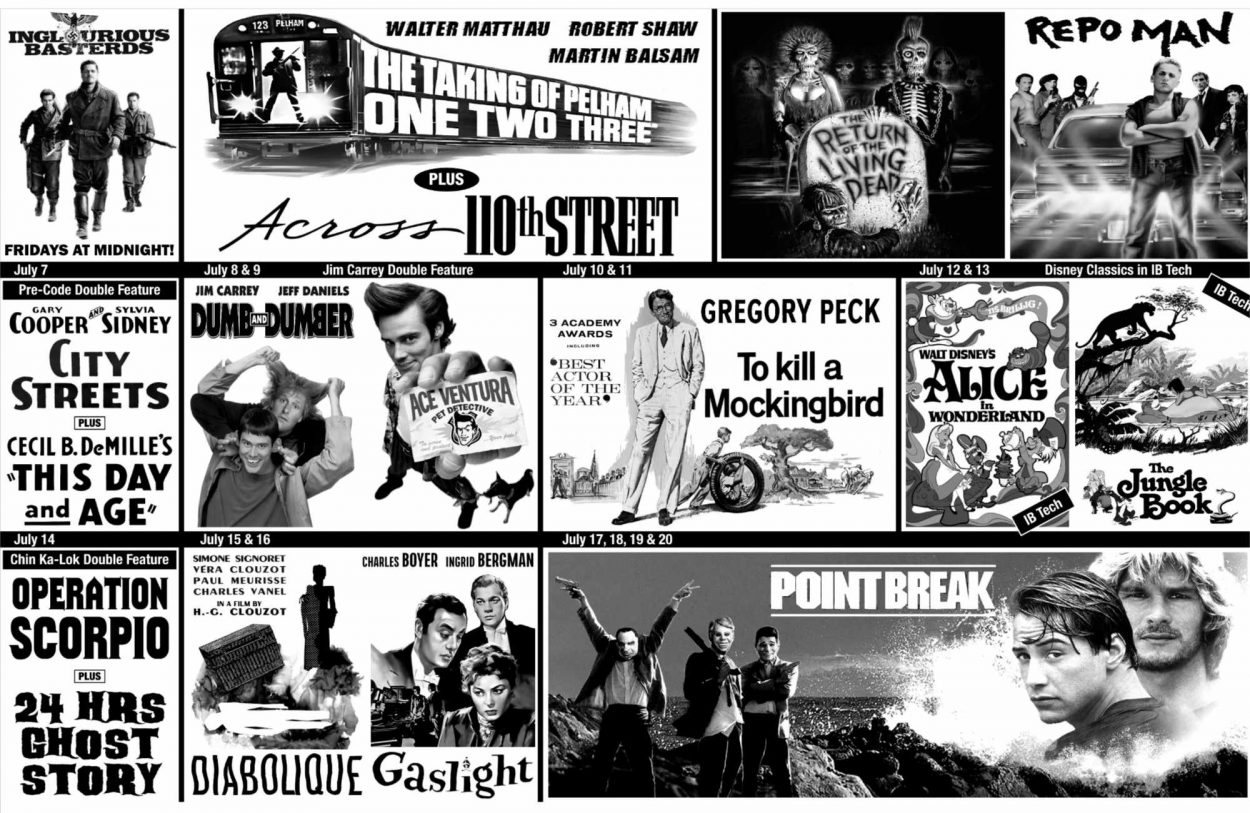War is hell, and Henry King’s Twelve O’Clock High (1950) takes great pains to show you this. Most classic war films contain a strong sense of American Patriotism and nationalistic pride. They show wonderful barracks camaraderie; guys chatting about their girls “back at home,” interspersed with super exciting action scenes and the gut-wrenching pain of losing a buddy to the fight. Twelve O’Clock High is none of these things. With some of the most bitter and poison-filled dialogue written into a studio war film and many of the darkest story and character arcs, this film easily falls under the classification of military noir. 1950 may have only been the start of the Korean War, but it ushered in an entire genre of much heavier, darker and more intense military noir work. Later films like Steel Helmet (Sam Fuller, 1951), Attack! (Robert Aldrich, 1956), and Men In War (Anthony Mann, 1957) are examples. While centered on WWII, Twelve O’Clock High is a film that deeply explores the psychology of war as an extreme experience, unwittingly discussing PTSD before it was even a labeled effect of going to war. This film is important.
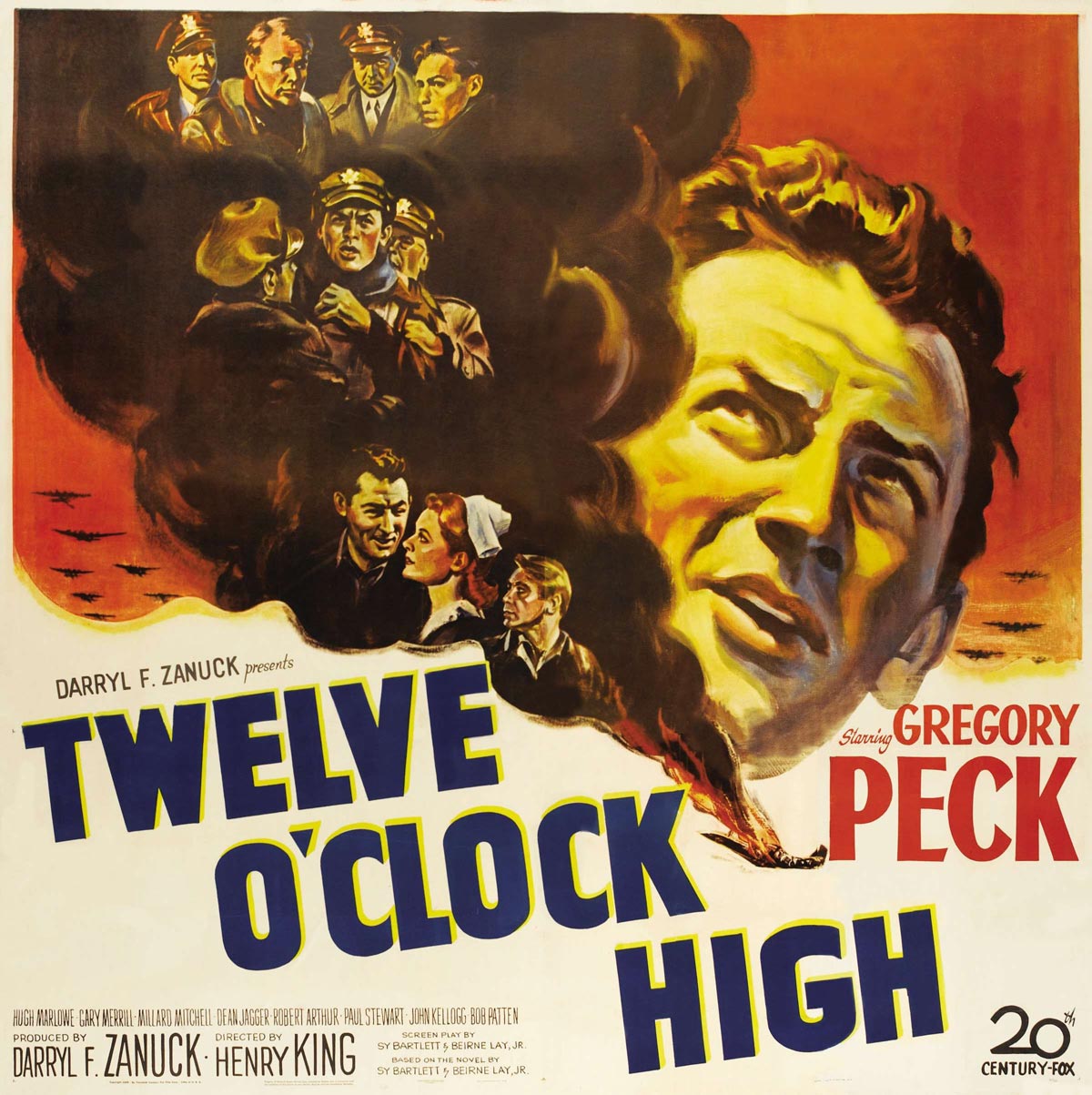
Penned by Sy Bartlett (scriptwriter for Henry Hathaway’s 1947 WWII noir 13 Rue Madeleine) and Beirne Lay, Jr., Twelve O’Clock High is a gritty and intense film that asks as much of the audience as it does of the characters. Bartlett and Lay had extensive WWII knowledge. These gentlemen were highly experienced airmen with harrowing stories who ended up adapting those into successful Hollywood careers when they returned, because…why the hell not? Lay was shot down and saved by the French Underground while Bartlett was Intelligence and on the front line often. The title itself, Twelve O’Clock High, comes from the location on a fighter plane most in danger from an enemy attack from above: the plane’s nose. The air force always signals locations on planes according to clock times/numbers.
It’s worth noting here that Twelve O’Clock High was one of the first films to utilize actual war footage as part of the film. Editor Barbara McLean, a Henry King regular, had worked for John Ford, Gregory LaCava and more (with a special mention for her tremendous editing on the 1947 noir Nightmare Alley). She worked her ass off splicing the Allied and Axis battle footage into the narrative. Darryl Zanuck had finagled it from the Air Force, who provided it for the film after approving how it would be used. The aerial combat footage from the Luftwaffe and US Air force gave the film a deep shift in reality. When the film quality and POV changes, even briefly, the viewer is uncomfortably aware that they are seeing what the pilot is seeing. They are no longer simply in a movie theater, with a soda, eating Red Vines or popcorn. They are in the cockpit of a WWII plane. They are watching the pilots next to them get shot down; the viewer is under attack. The experience of the film has changed.
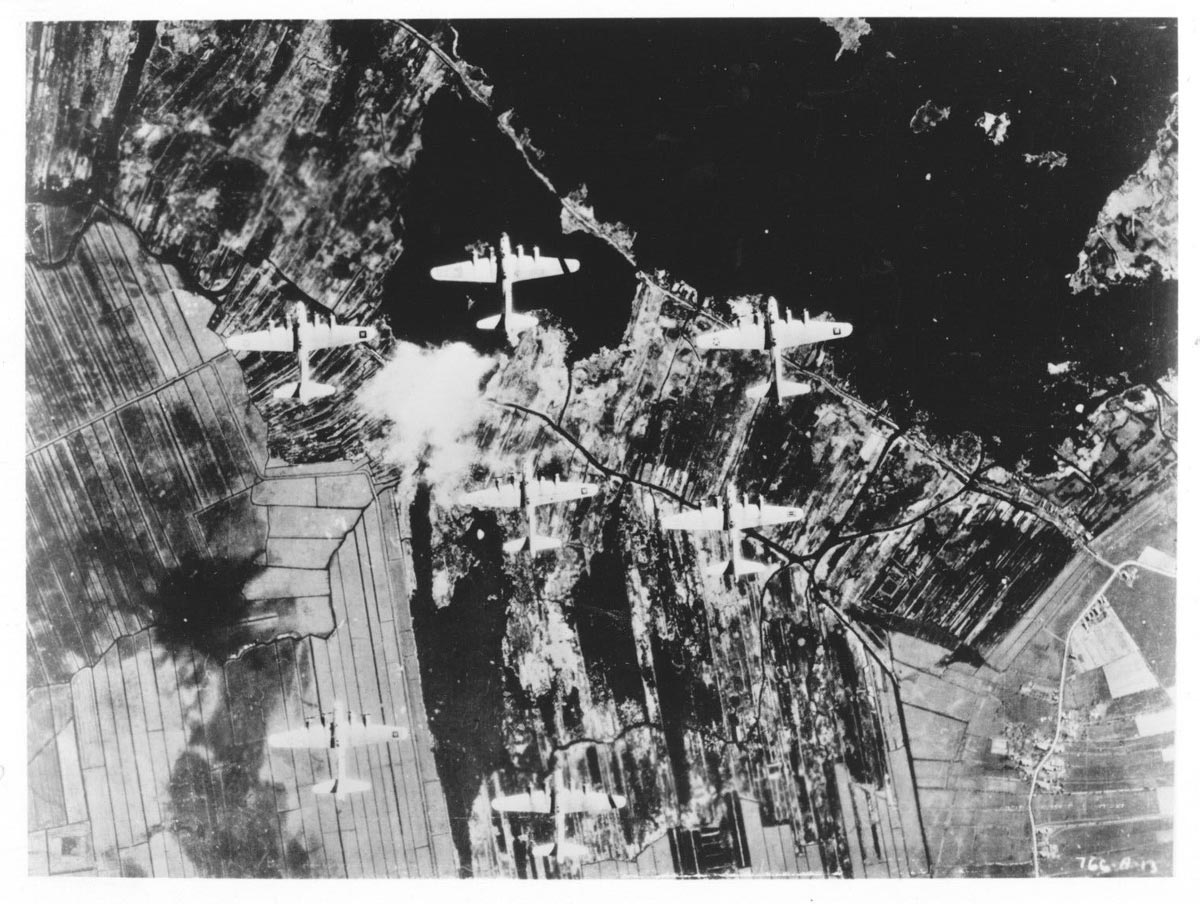
At the time Twelve O’Clock High was written and filmed, what we now recognize as Post Traumatic Stress Disorder (PTSD) would have been called combat exhaustion. By 1945, the US Army had adopted a phrase for it: “Every man has his breaking point.” But it wasn’t until 1952 that the DSM-I included a term for what men were suffering during and after war: “gross stress reaction.” 1969’s “Vietnam Combat Reaction” existed which then led to 1972’s New York Times term of “post-Vietnam Syndrome,” but neither of those quite fit. They were too war-specific. It wasn’t until 1980 that the mental health community had the right phrase for this trauma-based condition that soldiers suffered as a result of war and entered it into DSM-III: Post Traumatic Stress Disorder (PTSD).
Watching the film, it is very clear that Bartlett and Lay were keenly aware of what was happening to the men around them and what was causing it, even if they didn’t know what to call it. Every soldier who went to war did. In this way, Twelve O’Clock High is more than a little chilling and far ahead of its time. Within the first 15 minutes of the film, Colonel Keith Davenport (Gary Merrill) and Major “Doc” Kaiser (Paul Stewart) have a conversation about the next day’s mission. Doc raises the issue of the intense fatigue their pilots are facing (causing them to call out sick, amongst other things). This scene introduces the highly frightening concept of “maximum effort,” one of Twelve O’Clock High’s primary topics.
Davenport: The rules say a man may go right up to the point where he might endanger his crew. I wish I knew what that meant. If I knew I’d tell you.
Doc: Well, can you tell me this – do I okay Bishop for tomorrow?
Davenport: He had a tough deal; Jesse’s a tough boy.
Doc: How tough? What happened to him today must’ve done something to him inside. It had to have cost him something. Somebody’s gotta give me a policy. Some kind of yardstick. I wish you’d tell me what a “maximum effort” is.
Davenport: Doc, I wish I knew. I wish I could answer that.
Let’s not kid ourselves: this is a film about PTSD before the term was invented. This idea of “maximum effort”? This is a concept that superior officers cannot even define. There is no gauge for it, no level. All they know is that it means pushing their officers to the very brink of what they can do and then pushing them some more. Sure, it’s war. Of course, let’s beat Germany and kill the bad guys. But then the eternal war question: is breaking the youngest and most talented officers, destroying their bodies, minds and souls, going to make it happen any faster or with any more finesse? This is what Twelve O’Clock High is ultimately about. How much can the best men in the Air Force Division take and at what cost. What does it mean to push your men to that “maximum effort”? Is it worth it? Is war ultimately worth that kind of sociopathic glory?
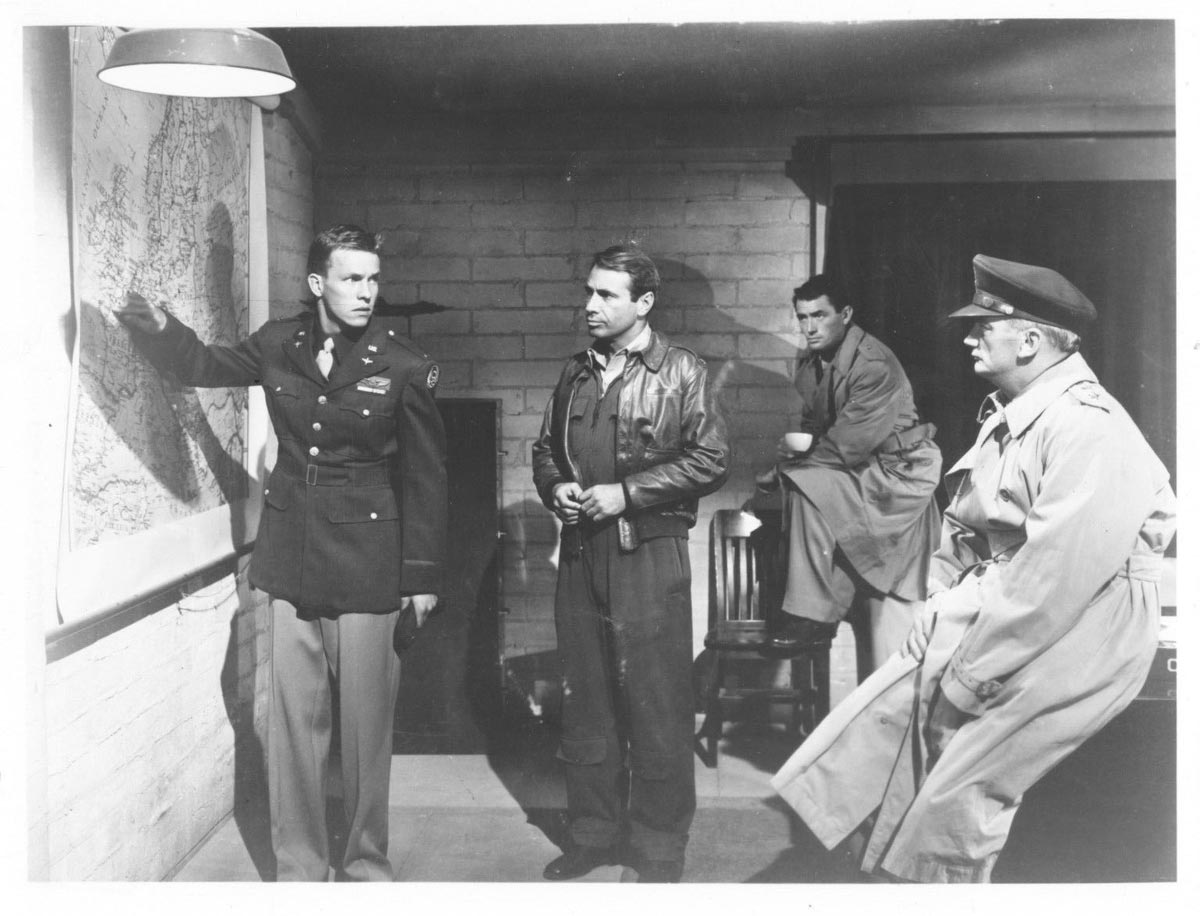
The main premise of Twelve O’Clock High is that control of the 918th Bombardment division gets shifted from the highly loved Colonel Davenport to Brigadier General Frank Savage (Gregory Peck), a more detached and traditional military man. Reason? Davenport’s “overidentification” with his men. Seen as a dangerous flaw, Savage and General Pritchard (Millard Mitchell) tell Davenport that this alignment with his personnel will only lead to further strategic “weakness.” Davenport’s humanity has become too obvious. Pritchard instructs Davenport to get a shot, something to help him “sleep for 24 hours;” he is relieved of his duties. What he is really saying is “upper management” has decided Davenport is no longer mentally capable of leading his division.
Davenport’s removal is significant. It is the second time in the film an abnormal mental condition brought on by the war environment has been discussed. Davenport is being pushed out because his deep relationships with his officers are clouding his military judgment. He has had a breakdown, according to Pritchard and Savage. His officers bear witness to the aftermath of this exchange and the fallout is shocking and excruciating.
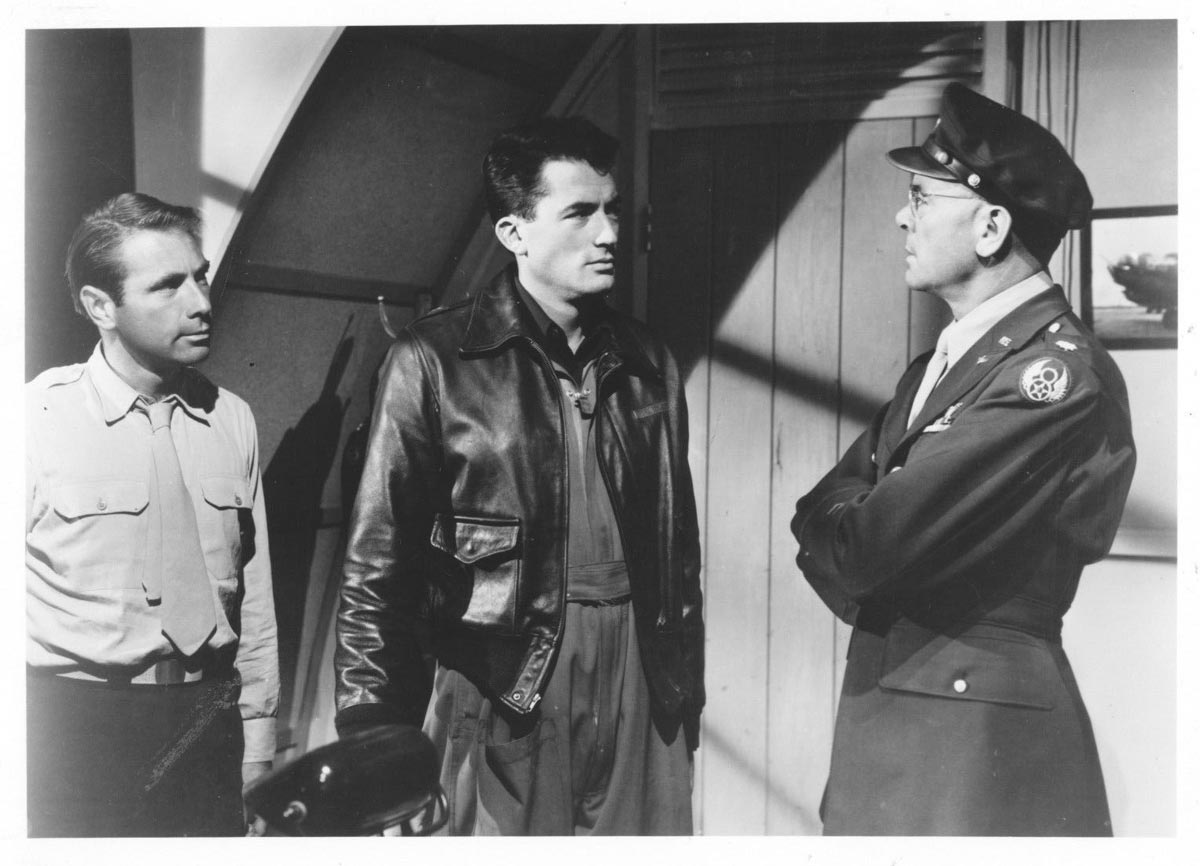
Savage, upon taking command of the 918th, is the polar opposite of Davenport. Tightening up every rule and regulation, he makes sure his officers know he doesn’t want to be “friends” or even friendly. Tough and military to the point of being fearsome, Gregory Peck’s performance as Savage ranges from calm and controlled to uncompromising and fire-spitting, comparable only to the role he played in King Vidor’s Duel in the Sun. In his first address to the 918th Division, Savage lets them know how things stand:
“We’re in a war, a shooting war. We’ve got to fight, and some of us have got to die…Stop making plans, forget about going home. Consider yourselves already dead. Once you accept that idea, it won’t be so tough.”
Pritchard has a strong discussion with Savage just before the changing of the guard. He tells him that the 918th and their missions are critical for the war. These men may mean the difference between winning and losing but the process Savage will have to put them through won’t be pretty. He will have the unenviable task of having to get the “maximum effort” out of each officer, which Pritchard cannot define anymore than Davenport could.
Pritchard tells Savage, “Gotta ask you to take nice kids and fly ‘em until they can’t take anymore. Then put ‘em back in and fly ‘em some more. We’ve got to find out what a maximum effort is. How much a man can take and get it all. I don’t even know if any man can do it. That’s what cracked Keith.” Maximum effort is an unknown quantity; it is something that leads to instability and “cracking up.” Savage agrees to this request and leads the 918th on its missions. Thus the film and its characters journey into battles full of fear and existential terror, places even Savage never expected he, himself, would travel to when assuming this command.
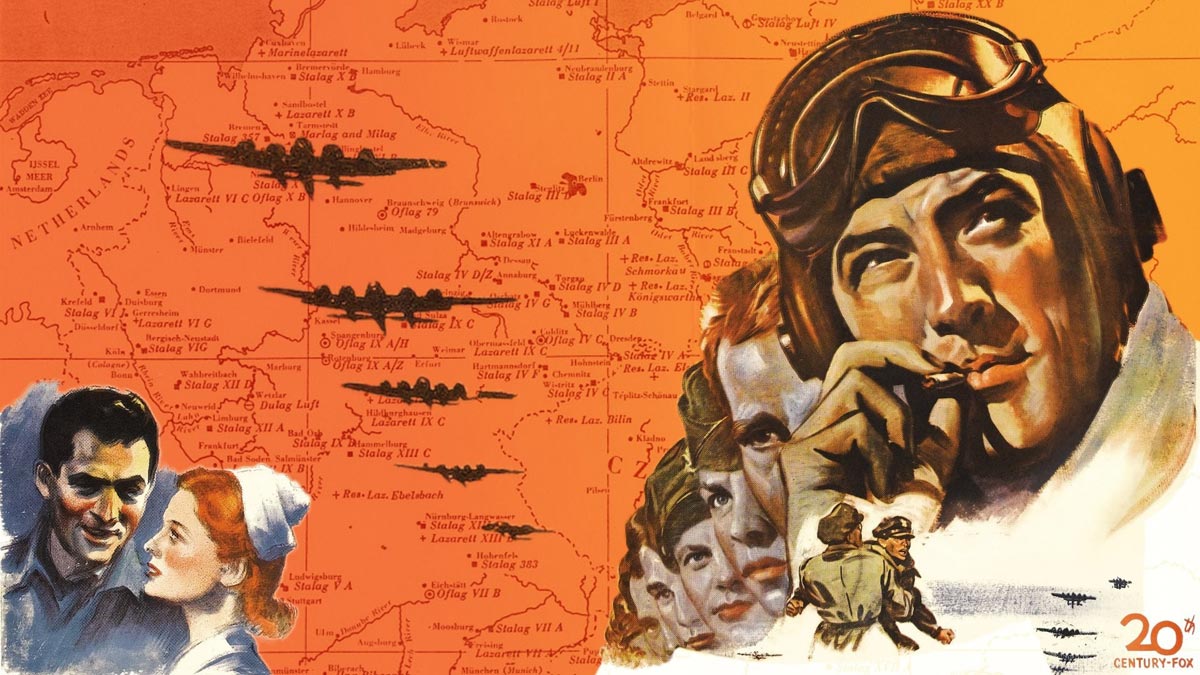
In closing, it would be shameful not to mention that Twelve O’Clock High was also a TV show on ABC from 1964 to 1967. Actors Frank Overton, Paul Burke, Chris Robinson, Robert Lansing and Barney Phillips (my fave) were the primary leads while all kinds of guests came on. Jack Lord, Burt Reynolds, Bruce Dern, Sally Kellerman, Tom Skerritt, Seymour Cassel, Antoinette Bower, Hazel Court…guest stars a’plenty!
I’ll leave you with a few clips and hope that you join us at the New Beverly for the astounding Twelve O’Clock High on the big screen. A truly underappreciated gem of a film.


